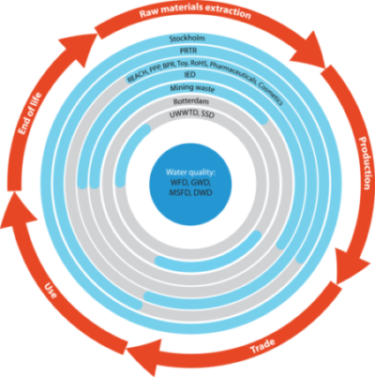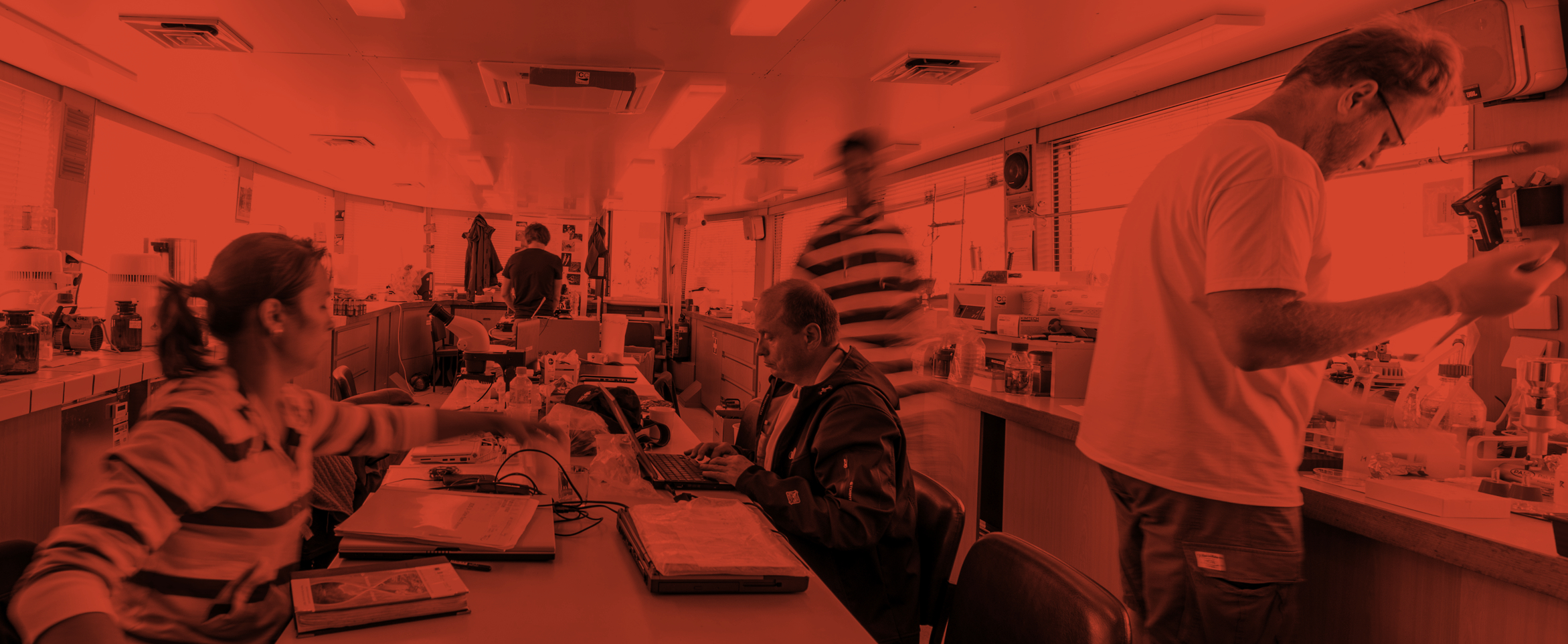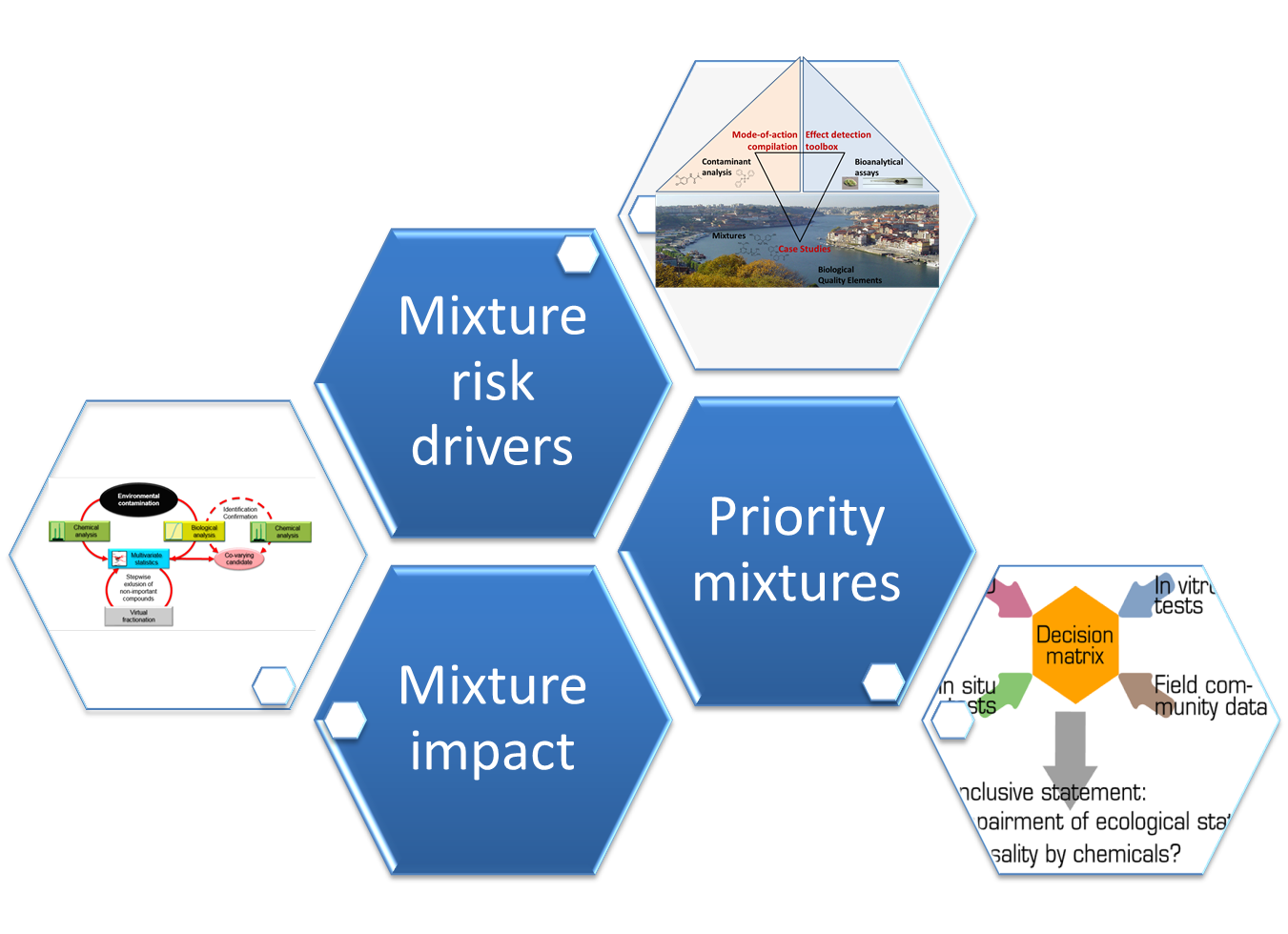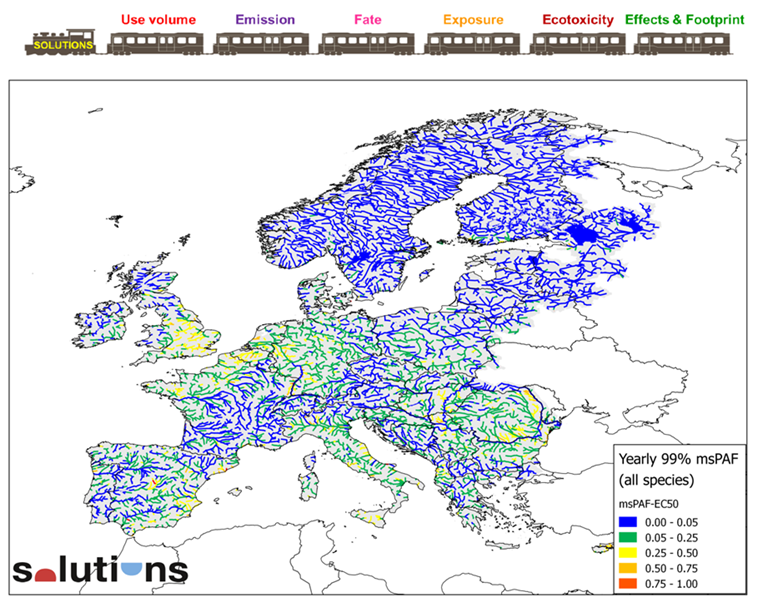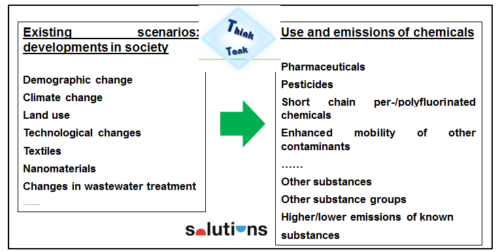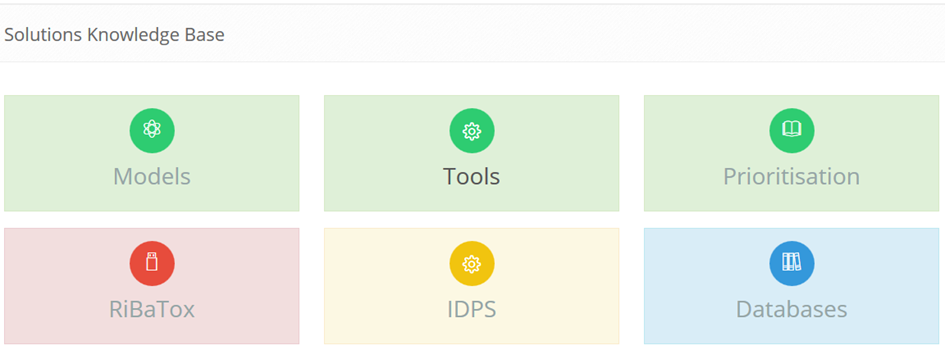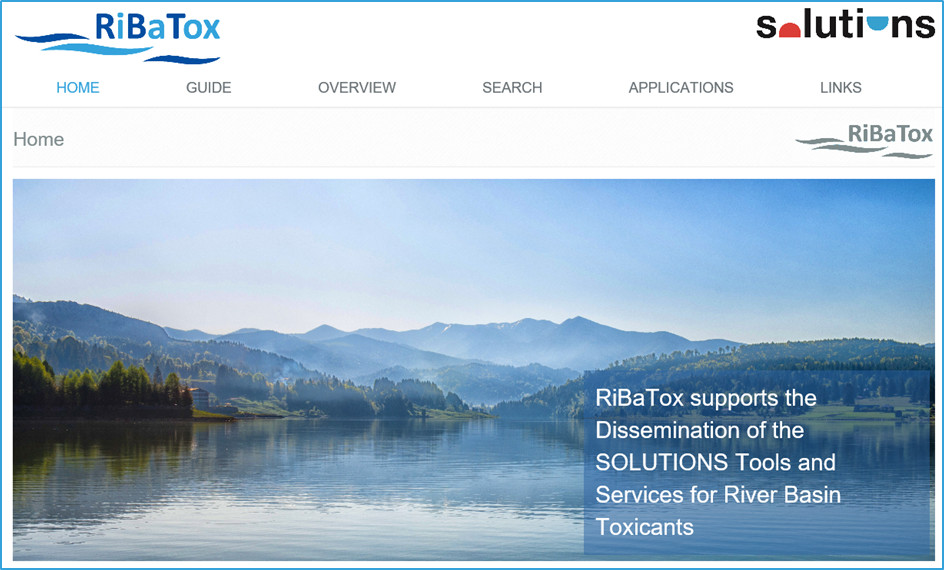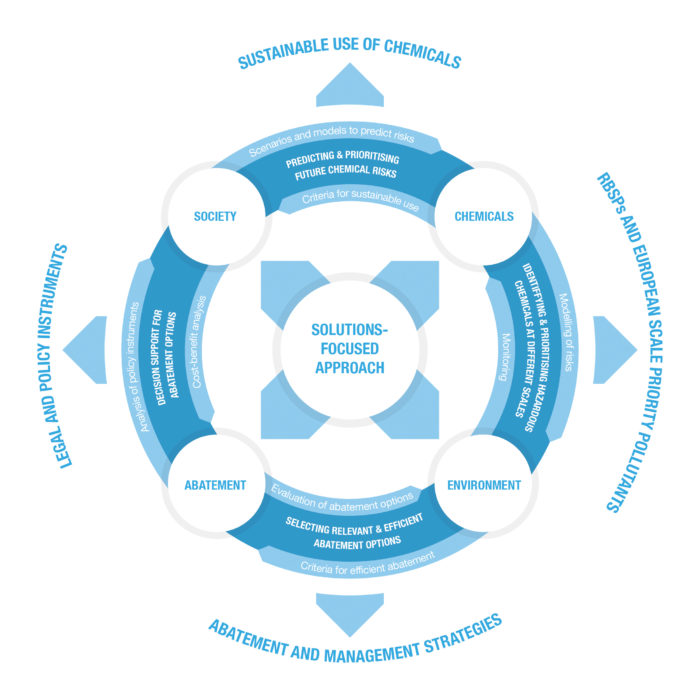SOLUTIONS searches for new and improved tools, models, and methods to support decisions in environmental and water policies. Therefore, the overall goal of the project is to produce consistent solutions for the large number of legacy, present and future chemicals posing a risk to European water bodies with respect to ecosystems and human health.
Researchers typically communicate via scientific papers and/or presentations. However, these dissemination pathways of scientific results and products often do neither address end-user requirements nor do they reach decision makers in management, regulation and industry.
SOLUTIONS purpose is to digest and condense the project outcomes (in terms of analytical tools, computational models, databases) into applicable guidelines and operational science-policy interfaces, as for example the so-termed piece of software RiBaTox (Web-based decision support system for River Basin specific Toxicants) to assist with the assessment, prioritisation and abatement of emerging pollutants.
Monitoring tools
Chemical, effect-based, ecological and integrated tools
Combining Chemical & Biological Analyses
Combining Chemical & Biological Analyses
SOLUTIONS applied chemical and biological analyses to assess the micropollutant burden during low flow conditions up- and down-stream of three wastewater treatment plants discharging into small streams in the Swiss Rhine catchment Neale, Munz et al., 2017. Chemical analysis included 405 organic substances, while the applied bioassays comprised 13 different endpoints, representing different stages of cellular toxicity pathways including xenobiotic metabolism, receptor-mediated effects and adaptive stress responses, as well as whole organism effects. As expected, chemical and bio-analyses showed higher chemical concentrations and effects for effluent samples, with the lowest chemical concentrations and effects in most assays for the upstream sites. While chemical analysis showed differences in the chemical pollution profiles at the different sampling locations, bioanalysis provided information about the mixture effects of additional chemicals in the samples. Mixture toxicity modeling was performed to assess the contribution of detected chemicals to the observed effect. For most bioassays, very little of the observed effects could be explained by the detected chemicals which emphasizes the importance of combining bioanalysis with chemical analysis to provide a more complete picture of the micropollutant burden. However, the lack of effect data for the detected micropollutants in the different assays was a major limitation and more data is needed for a significant improvement of the mixture modeling. Further, both chemical and bio-analyses showed relevant contribution of diffuse sources from upstream during low flow conditions – besides the significant contribution of wastewater effluents to the micropollutant burden downstream - suggesting that improved wastewater treatment technology will not completely reduce the micropollutant burden, which renders additional source control measures also necessary.
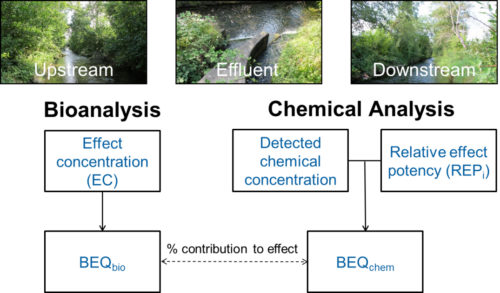
analytical screening
MetFrag Web tool
MetFrag is a freely available software for the annotation of accurate tandem mass spectra of small molecules such as metabolites and substances of environmental interest. Annotation is a first and critical step for the identification of a molecular structure. Candidate molecules from various databases are fragmented in silico and matched against mass to charge values. A score calculated using the fragment peak matches indicates the quality of the candidate spectrum assignment. MetFrag, launched in 2010, was one of the first approaches combining compound database searching and fragmentation prediction for the identification of small molecules from tandem mass spectrometry data. Since then many new approaches have evolved, including MetFrag itself within SOLUTIONS. Ruttkies et al. 2016 details the latest developments to MetFrag and its use in small molecule identification since the original publication. A great benefit is the addition of different information sources, beyond in silico fragmentation, into the identification workflow, reducing user workloads and improving the structure elucidation process.
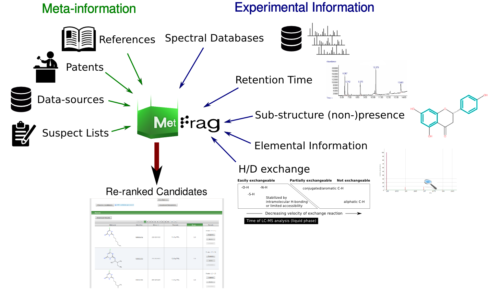
sampling tools
Passive sampling & LVSPE device
Passive sampling is a powerful tool that can conveniently be used for monitoring organic compounds in water and other environmental compartments. It has been designed to provide estimates of freely dissolved concentrations which have been shown to be in many cases most appropriate to explain exposure and adverse effects in biota. This downloadable SOLUTIONS internal deliverable provides a practical guidance on the use of passive samplers for monitoring organic pollutants in water. This guidance should assist users wishing to implement passive sampling methods in their research or monitoring work, but also more experienced users in the use of the available methods according to the state-of-the art. It addresses principles of passive sampling, sampler preparation, field deployment, laboratory processing, chemical analysis, calculation of aqueous concentrations and associated uncertainty considerations, as well as quality assurance. Practical examples of sampler operation and sample processing procedures developed and applied within SOLUTIONS are also provided. Additionally, SOLUTIONS pursues the successful implementation and application of sampling approaches for a more holistic monitoring of water quality. Schulze et al. 2017 presents a novel on-site large volume solid phase extraction LVSPE device tailored to fulfill the requirements for the successful effect-based and chemical screening of water resources.
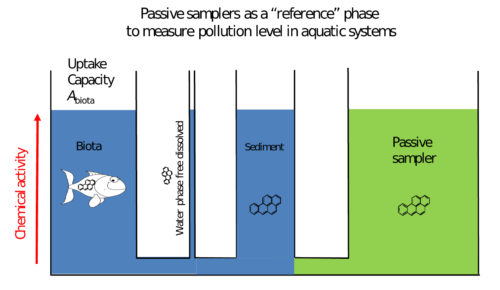
effect-based tools
Effect-based tools
Water quality monitoring is challenged with providing the basis for safeguarding the environment against adverse biological effects of anthropogenic chemical contamination. This conceptual paper by Altenburger et al. 2015 describes three routes to link the occurrence of chemical mixtures to the assessment of adverse biological effects. 1. Advanced multi-residue target and non-target screening techniques covering a broader range of chemicals co-occurring in the environment. By improving sensitivity and detection limits for known bioactive compounds of concern, new analytical chemistry data can be used to characterize priority mixtures. 2. Bioanalytical tools explored to provide aggregate measures integrating all components that produce adverse outcomes even for mixtures of varying compositions. 3. EDA advanced to identify major drivers of mixture toxicity. These approaches are explored in studies at Danube and Rhine basins, and also in rivers of the Iberian Peninsula.
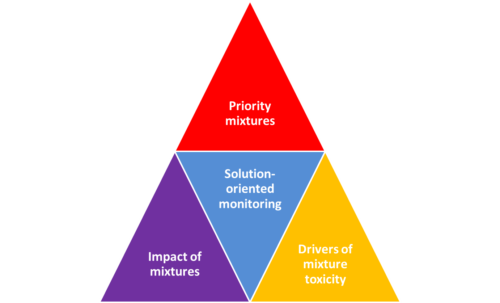
effect-directed analysis
Effect-directed analysis
Aquatic environments are often contaminated with complex chemical mixtures that may pose risk to eco-systems and human health. This contamination cannot be addressed with target analysis alone but tools are required to reduce such complexity and identify chemicals that might cause adverse effects on living organisms. Effect-directed analysis EDA meets this challenge and faces increasing interest in water quality monitoring. A new in-depth overview by Brack et al. 2016 summarizes current EDA experience providing practical advice on its application. EDA requires a combination of effect-based tools, specific cells or organisms detecting toxicity, and analytical tools to detect the chemicals present. SOLUTIONS develops approaches to simplify contaminant mixtures by removing those compounds that are not linked to effects. For individual samples this can be done by fractionation procedures separating groups of chemicals with similar properties, testing these fractions for toxicity, mutagenicity or endocrine disruption and removing the non-active ones. Only active fractions much less complex than the parent mixture are analysed for toxicants. SOLUTIONS developed several new tools to select and identify active chemicals in toxic and mutagenic fractions Gallampois et al. 2015 Hug et al. 2015 Krauss et al. 2015 If we have enough samples with effect and chemical data we can also use statistical tools to identify peaks in our chromatograms that always occur together with specific effects. This does not proof cause-effect relationships but suggests candidate compounds. In a proof of concept study SOLUTIONS demonstrated that this approach was able to strongly reduce complexity of mutagenic wastewater effluents and selected candidates with specific composition (nitrogen containing compounds) that was well in line with expectations on mutagenic compound groups such as aromatic amines Hug et al. 2015b
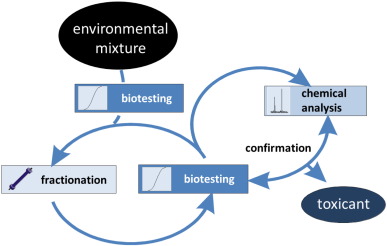
Modeling tools
Exposure and risk modeling for produced and used chemicals
Emissions for specific substances or substances groups
Emissions for specific substances or substances groups
In addition to generic approaches to estimate emissions of organic chemicals, SOLUTIONS scientists have been developing techniques to estimate emissions for specific substances or substances groups in case studies. Lindim et al. 2015 estimated the emissions of perfluorooctane sulfonic acid PFOS, and perfluorooctanoic acid PFOA to surface waters and used an application of STREAM-EU to the Danube River catchment to verify the accuracy of estimates. Results obtained showed that the best estimates for PFOS and PFOA emissions in the Danube region are obtained by considering the combined contributions of human population, wealth (based on local gross domestic product GDP) and wastewater treatment. Human population alone cannot explain the levels of PFOS and PFOA found in the Danube catchment waters. Introducing wealth distribution information in the form of local GDPs improves emission estimates markedly, likely by better representing emissions resulting from consumer trends, industrial and commercial sources. The largest source of PFOS and PFOA to freshwater are wastewater treatment plants. Lindim et al. 2016b completed an emissions inventory for 54 top consumed human pharmaceuticals in Sweden was done based on national consumption data, human metabolic rates and wastewater treatment removal rates. The highest emissions to water were found for Metformin, Furosemide, Gabapentin, Atenolol and Tramadol.
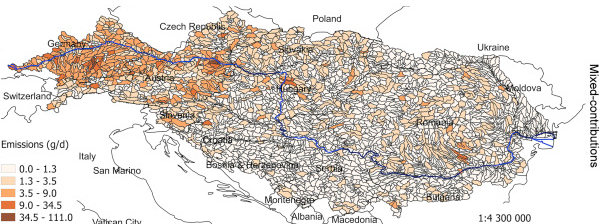
Applications of STREAM-EU
Applications of STREAM-EU
The Spatially and Temporally Resolved Exposure Assessment Model for European basins STREAM-EU model has already seen three published applications. Lindim et al. 2016 simulate the environmental fate of perfluoroctanesulfonic acid PFOS, and perfluorooctanoic acid PFOA in the Danube River basin and compare model predictions to recent monitoring data. The model predicts PFOS and PFOA concentrations that agree well with measured concentrations for large stretches of the river. This was later up-scaled to the eleven most populated European river catchments to provide a European-wide perspective on the contamination with PFOS and PFOA. STREAM-EU model was used to predict the water concentrations, estuarine export and retention of these substances. Emissions of PFOS and PFOA to those catchments were calculated based on a previously published method. The simulation results are in reasonable agreement with field data, and indicate widespread exceedence of the surface water Environmental Quality Standards for PFOS. A third application provides an exposure assessment for 54 pharmaceuticals in Swedish surface waters. Again, the water concentrations, estuarine export and retention of these substances were quantified. In an on-going effort these results are being used to estimate effects on Swedish river ecosystems.
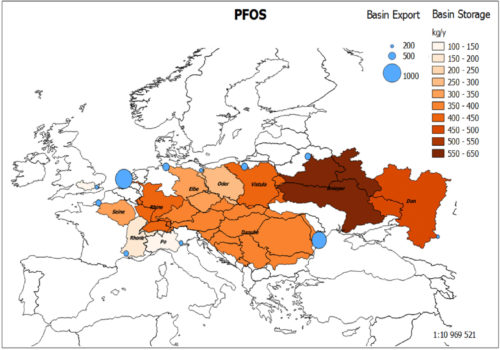
Spatially and Temporally Resolved Exposure Assessment Model for European basins STREAM-EU
Spatially and Temporally Resolved Exposure Assessment Model for European basins STREAM-EU
SOLUTIONS scientists developed a novel dynamic mass balance model for predicting the environmental fate of organic contaminants in river basins Lindim et al. 2015. It is based on a pre-existing open source water quality modelling framework Delft3D-WAQ and has been linked to the Europe wide hydrology model E-Hype by SMHI. STREAM-EU goes beyond the current state-of-the-science in that it can simulate spatially and temporally-resolved contaminant concentrations in all relevant environmental media (surface water, groundwater, snow, soil and sediments) at the river basin scale. The model can currently be applied to multiple organic contaminants in any river basin in Europe.
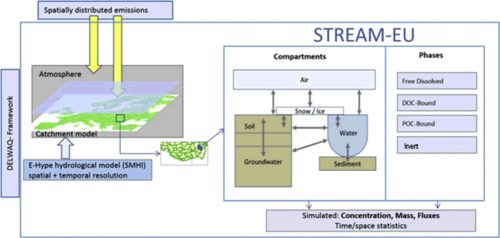
Mixture assessment
Experimental and modeling approaches to assess mixtures of contaminants
chemical footprints
Chemical footprints
Freshwater environments are contaminated with complex mixtures of chemicals posing risks to ecosystems & human health. One core goal of the European Environmental Action plan 2020 is to reach a non-toxic environment. Chemical footprints represent the amount of water in a country or a city that is required to dilute all emissions to concentrations that do neither pose a risk to ecosystems nor to human health. Thus, chemical footprints as applied by Zijp et al. 2014 are a valuable tool to assess toxic impacts against safe boundaries for a specific regions and help to prioritize abatement options.
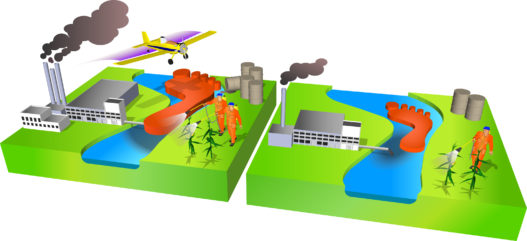
Water quality
Chemical, ecotoxicological and ecological quality in river basins
uncertainty of biodegradation rate constants of emerging organic compounds in soil and groundwater
The uncertainty of biodegradation rate constants of emerging organic compounds in soil and groundwater
This study assesses the uncertainty with respect to 1st-order biodegradation rate constants of emerging organic compounds (EOCs) for soil and groundwater reported in the literature, as these values are needed to predict fate of EOCs in the environment. For the majority of compounds, the reported degradation rate constants vary over more than three orders of magnitude. Correlation to factors that are well known to affect the degradation rate, such as temperature or redox condition was weak. No correlation at all was found with results from available quantitative structure-activity relationship models. This suggests that many unknown site specific or experimentally specific factors influence the degradation behavior of EOCs in the environment. Thus, local and catchment scale predictive models to estimate EOC concentration at receptors e.g. receiving waters or drinking water wells, need to consider the large uncertainty in 1st-order rate constants. As a consequence, applying rate constants that were derived from one experiment or field site investigation to other experiments or field sites should be done with extreme caution.
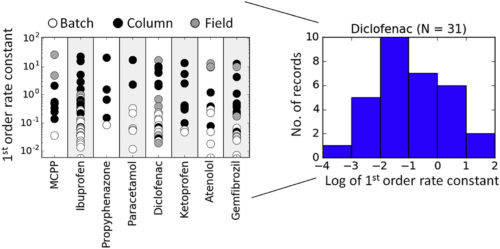
Swiss Rhine Catchment
Swiss Rhine Catchment
In collaboration with Ecoimpact, SOLUTIONS assessed the chemical exposure and the concentration patterns of organic micropollutants upstream, downstream and at effluents of 24 Swiss wastewater treatment plants Munz et al., 2017. The aim was to determine whether the risk for aquatic organisms living in wastewater-impacted streams is mainly driven by higher concentrations of pharmaceuticals and other typical household chemicals, or if pesticides play an important role also when released during low flow conditions. The streams were located across independent catchments with different land uses and were grab sampled during low flow conditions at eight time points. SOLUTIONS observed regular detections of micropollutants over all sites. While pharmaceuticals and other typical household chemicals constituted the highest loads, many pesticides were detected only during episodic events. Nevertheless, occasional concentration peaks were observed for pesticides, and the toxic pressure was mainly driven by a few pesticides and the anti-inflammatory drug diclofenac. The comparison with macroinvertebrate data underlined the importance of pesticides in wastewater-impacted streams. This relevance of pesticides also during low flow conditions seems to be typical for catchments where urban and agricultural land use co-occur as it is the case for many European countries.
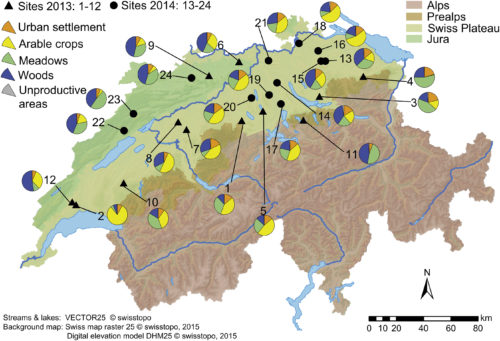
Iberian basins
Iberian basins
Mediterranean rivers are different from Northern & Central European in terms of hydrological regime, climate conditions, socio-economics; all leading to differences in the nature and relative importance of existing environmental stressors. To identify the most relevant organic pollutants in this kind of scenarios, characterized by frequent water scarcity episodes and heavy human pressure, over 200 organic priority and emerging pollutants were comprehensively monitored in water, sediment and biota from 4 river basins and further prioritized on the basis of their occurrence, toxicity, and physical-chemical data. We provide a prioritization of contaminants relevant to Iberian rivers to support water authorities with respect to the set up of River Basin Management Plans.
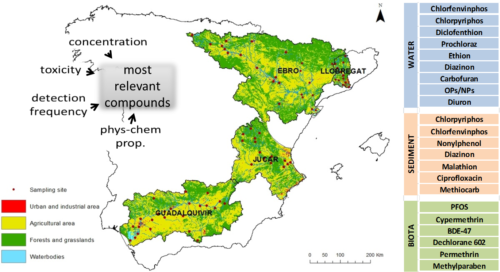
groundwater & bank filtrate
Groundwater & bank filtrate
River bank filtration RBF is a common technique for the pre-treatment of surface water for drinking water supply. During subsurface passage from the river towards extraction wells, undesired substances, such as pathogenic virus or contaminants shall be removed. While many river contaminants cannot be detected after bank filtration several emerging pollutants such as the pharmaceutical carbamazepine are fully persistent even after more than 3 years of transfer time. This study by Hamann et al. 2016 is one of very few reporting on the long-term field-scale behavior of organic micropollutants. It highlights the efficiency of RBF for water quality improvement as a pre-treatment step for drinking water production.
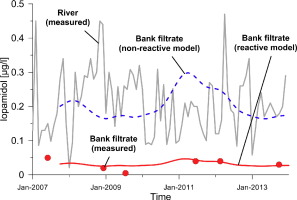
Prioritisation of chemicals
Approaches and results on prioritisation of chemicals on different scales
Abatement options
Technical and non-technical options towards a non-toxic environment
Smart abatement of human pharmaceuticals in surface waters
Smart abatement of human pharmaceuticals in surface waters
Pharmaceuticals are considered a risk for various functions of surface waters. Enhanced purification at sewage treatment plants (STPs) can present a solution. But which STPs should be upgraded first? Coppens et al. 2015 investigated to what degree individual treatment plants affect the water quality in receiving surface waters, by using mathematical modelling. The individual STPs were ranked with respect to their overall negative impact on receiving waters with certain functions, in particular a provision of raw drinking water, and b nature protection. This provided a clear ranking of 345 Dutch STPs, as shown in the figure (red dots are all STPs, blue dots are priority STPs for protecting drinking water resources and green dots are priority STPs for nature protection). SOLUTIONS scientists are in the process of up-scaling this approach for the whole Rhine catchment area, one of SOLUTIONS three case study areas.
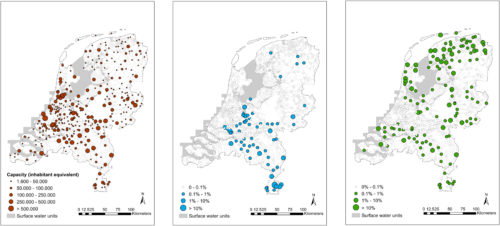
abatement options
Mitigation options for chemicals of emerging concern in surface waters
The water system provides fundamental services to society: industries, municipalities and agriculture withdraw, use and return water and demand water quality for intended purposes. As both water use and chemical emissions rise, increasing problems can be expected at the nexus of the chemical lifecycle and the water cycle. Currently, action on deterioration of water quality by chemicals is focused mostly on problem and risk analysis, while little attention is paid to mitigation options. Moreover, the intensification of current regulatory pathways presumably cannot yield a full solution to reach the policy goal of a non-toxic environment, so additional approaches seem warranted. This study by van Wezel et al. 2017 collates and evaluates mitigation options for chemical water quality improvement. These include mitigation options during the design, registration and authorization, production, use and waste phases, and ultimately technological interventions at the point of use, the point of environmental entry or at the point of a susceptible function of the water.
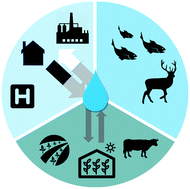
Innovative regulation
Approaches towards consistency of WFD with other regulations
Policy database
Chemicals covered by regulatory frameworks of relevance for WFD
Chemical pollution and reducing risks to human health and the environment are in focus in a large number of European regulations and directives, but also as multilateral environmental agreements. Diverse international pieces of legislation and regulatory frameworks cover different parts of the chemical life-cycle which can be represented by five categories: Raw material extraction; Production; Trade; Use and End-of-life. An improved coordination and cooperation between the different regulatory frameworks aimed at reducing chemical risks to the environment and human health, can as well lead to an improved implementation of the Water Framework Directive across Europe. SOLUTIONS has developed this freely available on-line tool/database for the search of chemicals that are listed in directives, conventions and international agreements, and other initiatives of relevance for the fulfillment of the goals established by the WFD.
